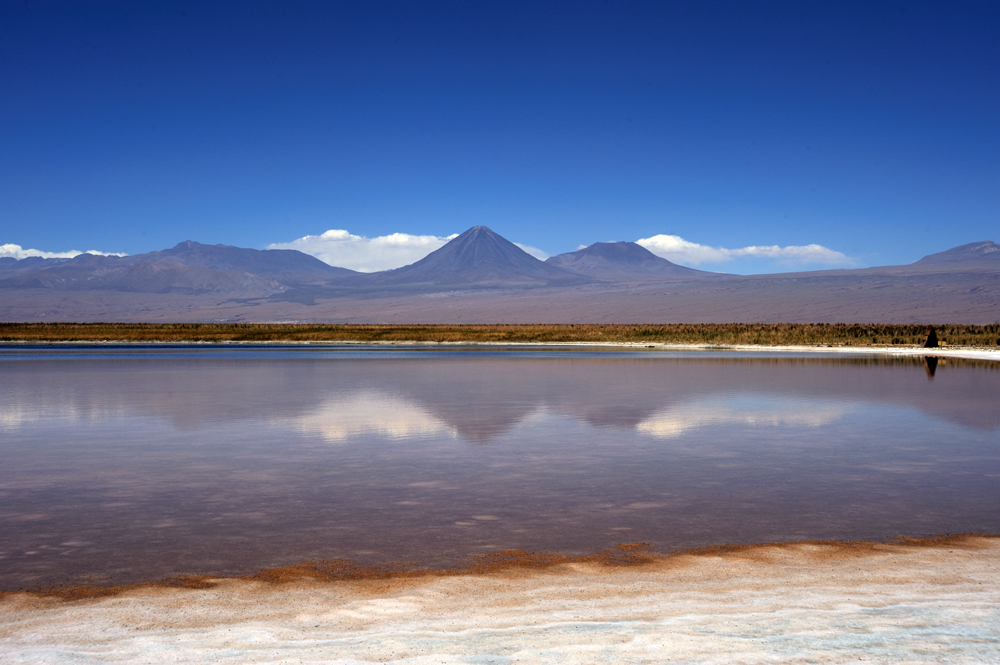
The main aim of our winter travel to Chilie was climbing Ojos del Saldo, the highest volcano in the world. It is also pretty high in absolute numbers, 6893 meters, so required acclimatisation.
Acclimatisation near the Ojos, as most climbers do, is very boring and uncomfortable – Ojos’s neighbourhood is empty high-altitude salty desert. Dust, endless wind and plenty of uniforms volcanos around. We remember it from our previous attempt. So, we decided to separate the sheep from the goats, the place of acclimatisation from the place of the main summit.
North third part of Chile is an entire desert. The Atacama is one of the driest places in the world. Its west part descent to the ocean, its east part ascent to the Andes mountains. Ojos del Salado dominates on its east part somewhere in the middle. The most north-east part of Atacama, on the border with Bolivia and Argentina, climbs on the edge of Altiplano, the huge high-altitude plateau in the Andes. The biggest part of Altiplano covers Bolivia, its north part belongs to Peru, and the small south bit is shared between Chile and Argentina. This place has a high altitude (the lowest point – 2500 metres), beautiful and diverse nature, so we choose it for acclimatisation – to drive around, climb couple mountains, and move to Ojos.
So, from Eastern Island, we moved to San Pedro de Atacama, the little village that should serve as our acclimatisation base.
Closest to San Pedro airport is on Calama, the mining town in the middle of the desert. The Atacama is a raw material base of Chile – copper, gold, silver, borax and so on.
Already from the plane, it is easy to see that life is not plenteous here.
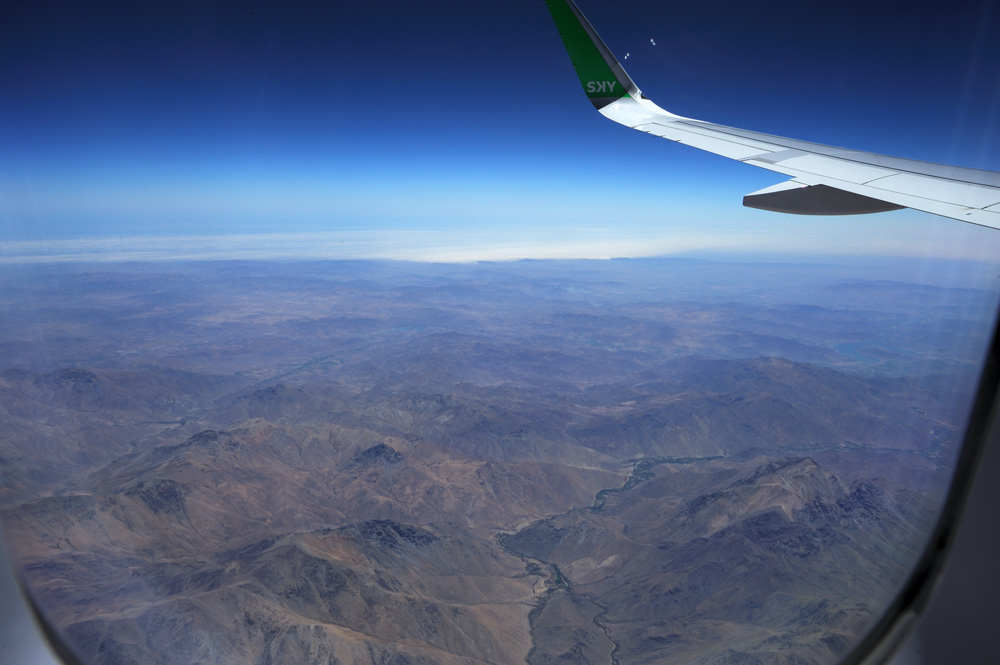
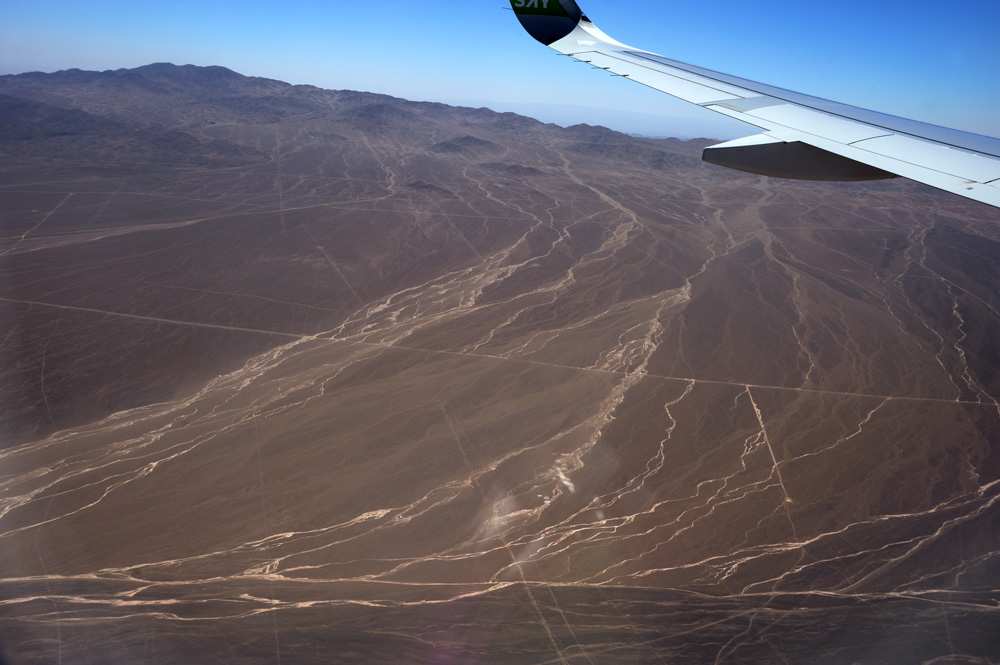
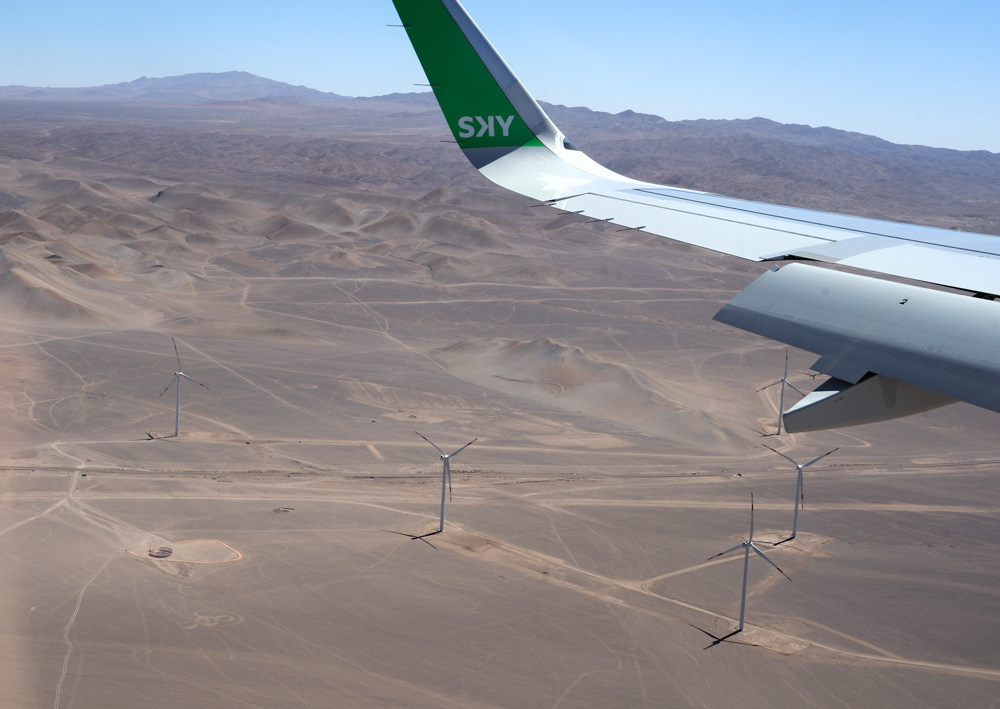
We rented a car at the airport. Well, the car was not an easy piece of this part of our travel. First of all, the agency rejected to give it to me. They said, that because my passport and driver licence are issued by different countries, Chilen police would be confused, and the agency doesn’t want to make ploce life more difficult. Well, first, there is no written information about such a situation (and I cannot say, that it is a rare situation). Second, when we rented a car in Copiapo for Ojos, nobody pays any attention to my documents. So, I don’t know, either people in Copipo don’t give a shit to such rules (if they really exist) or people in Caldera wanted under-the-counter money. Fortunately, Peer didn’t have such complication with documents and we got a car on his name. Actually, we finally met the police, but they didn’t care about our driver licences.
We got Peugeot, there are a lot of French cars in Chile. It was full of electronics. I don’t like too smart cars, they usually bring too many problems. And it was a diesel car (they are popular in Chile), and it brought additional fan for us.
So, we got our car and drove to San Pedro de Atacama. It is about a hundred kilometres from Calame, and a road is quite good, that is not typical for Chile.
With altitude elevation (San Pedro locates on 2500 meters) some vegetation and even animals appeared.
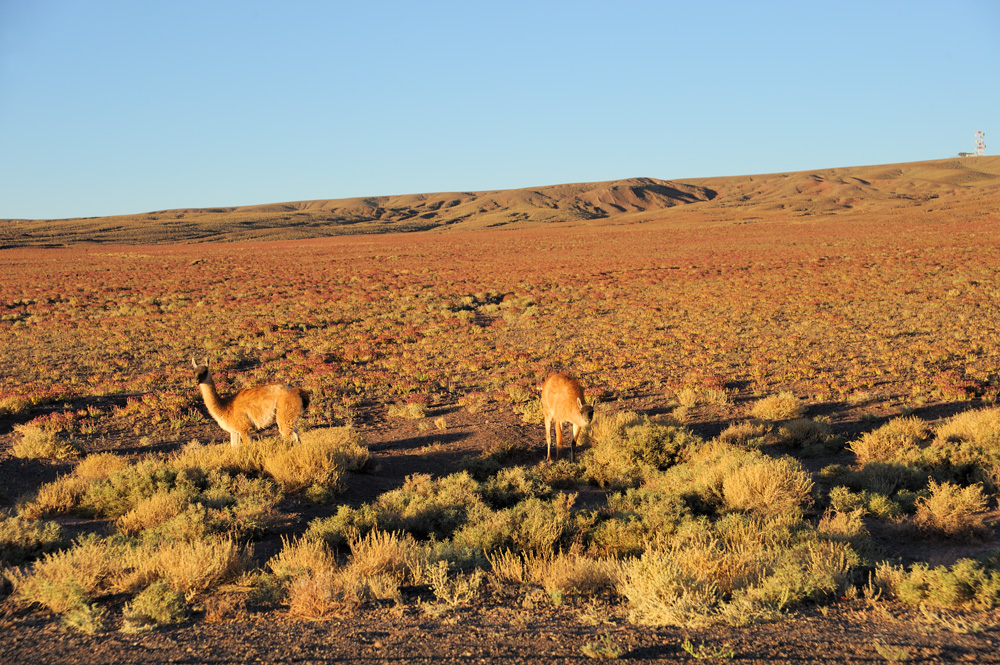
This edge of Altiplano is a very popular touristic place, and the town is made for tourists – plenty of hotels, hostels, cafe, restaurants, shops, and so on.
It looks quite unusual – narrow dusty streets between clay wall.
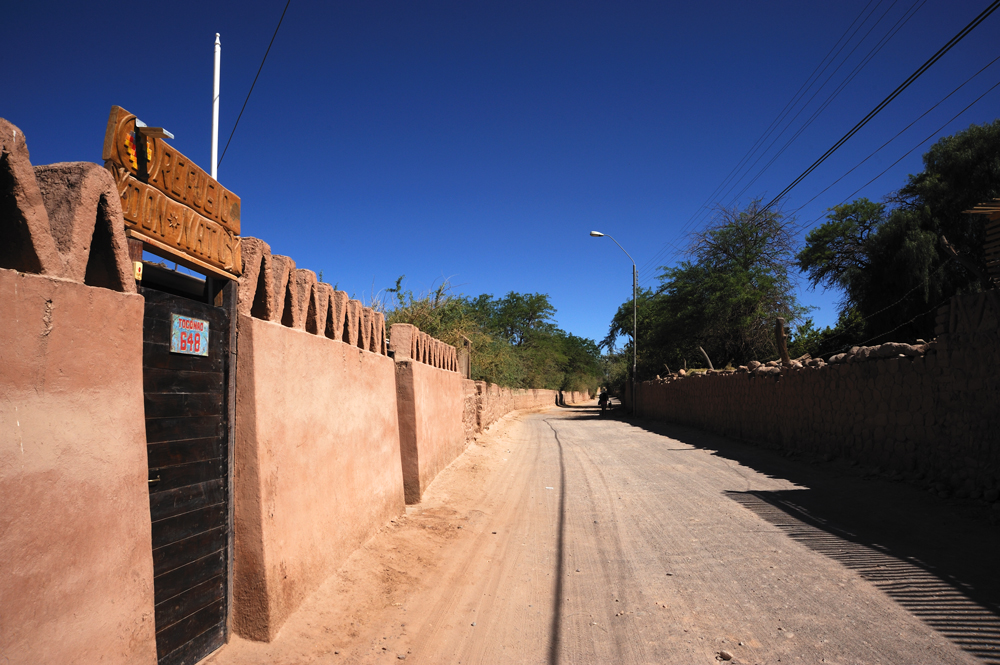
Our hostel
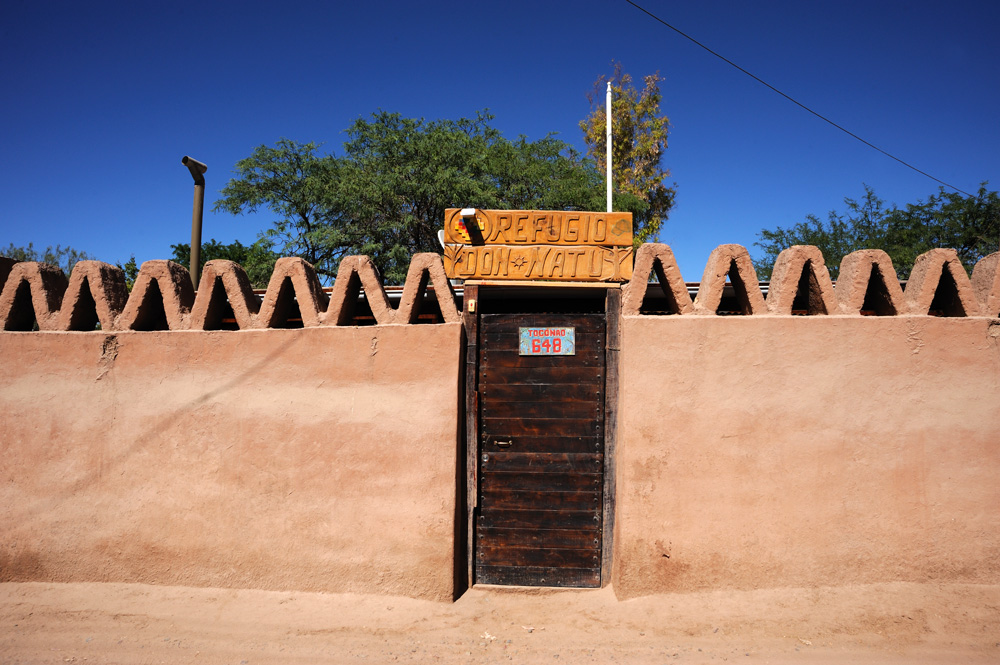
Neighbours
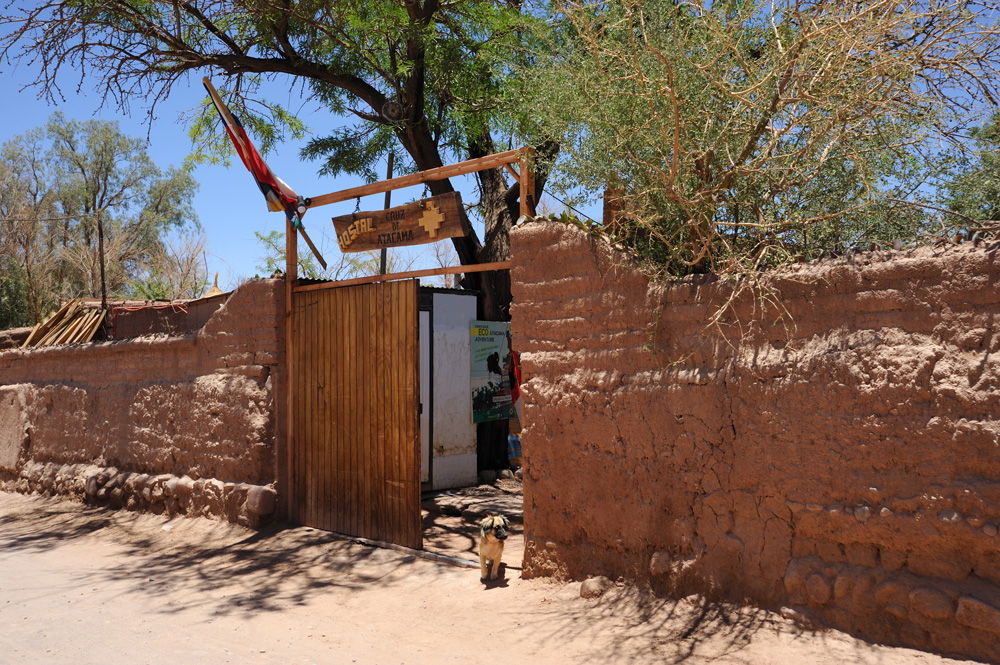
Looks like, the town people don’t trust each other.
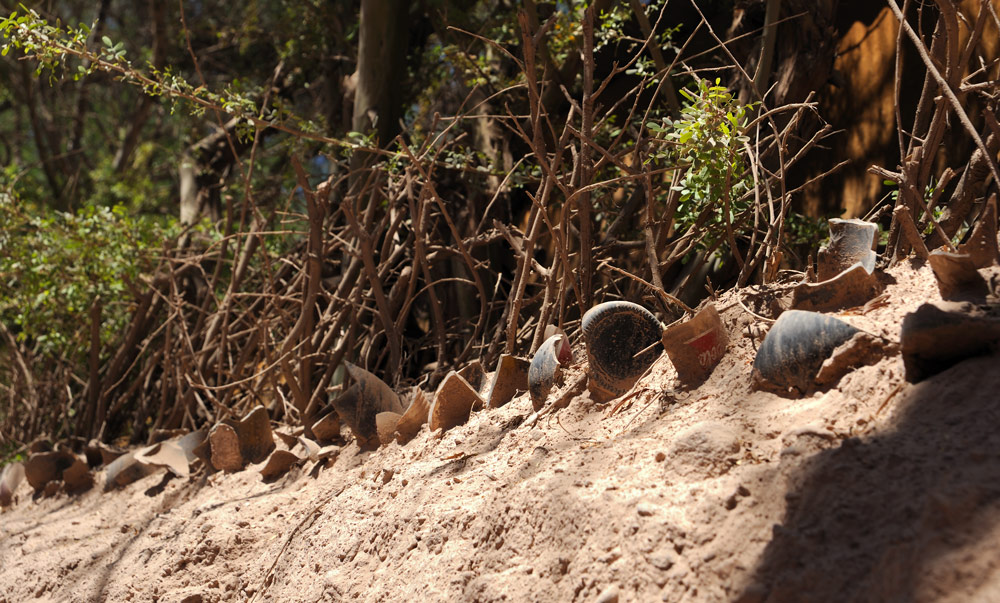
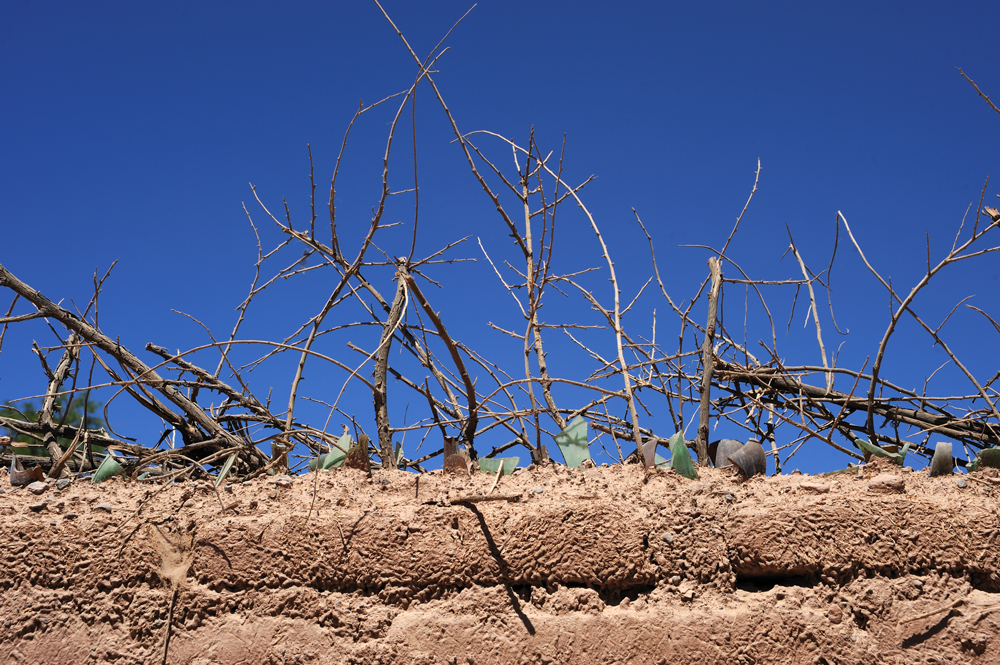
This dog spends most its time on the wall. Fortunately, it barked mostly on the other dogs.
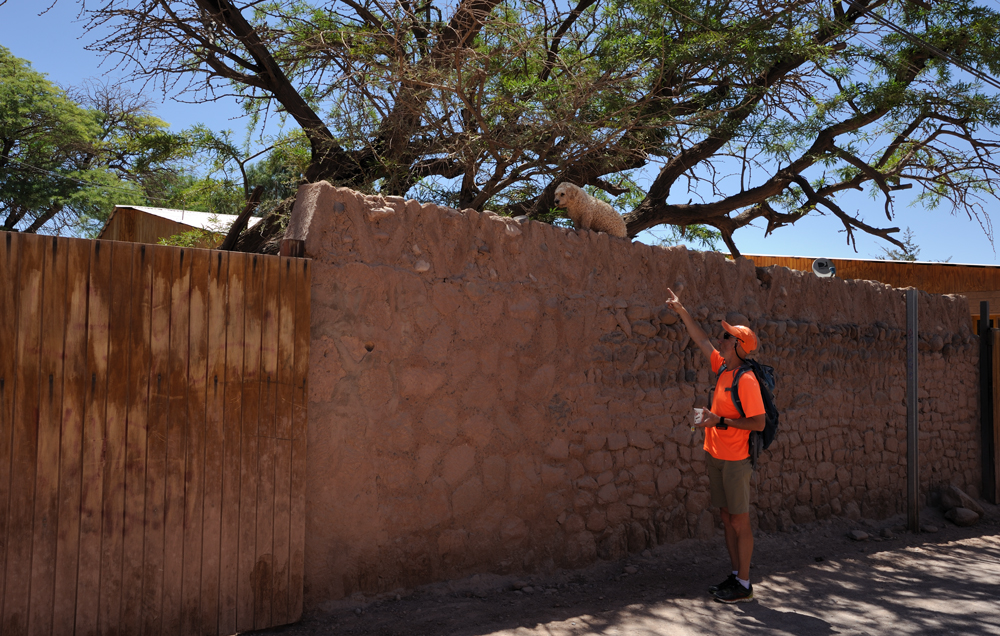
It is a central street with tourist offices, money exchange places and souvenir shops.
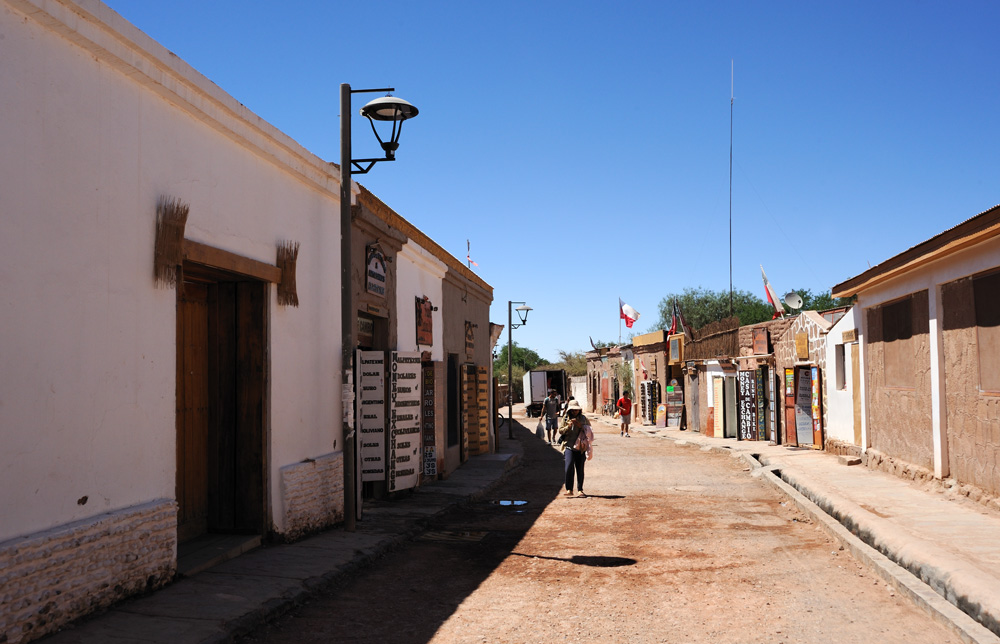
There is a Salar de Atacama, a huge salt marsh (100 x 80 km), on the south of San Pedro. It is the biggest salt marsh in Chile and a third in the world. From the east, it is bounded by the Andes, from the west by Cordillera-Domenico. Water from the slopes of the mountains fills this salt lake. Rare rains fall in this salt lake. Nothing outflows from this lake. However, the amount of water is very low. Because of evaporation – tropics, hot, desert, dryness.
However, it has two permanent lake – Laguna Cejar and Laguna Chaxa.
On our first day in San Pedro, we had a long sleep after all flights from Eastern Island and went to Laguna Cejar, it is just 20 km from the town.
We found that continental Chile is not different from Eastern Island in the organisation of tourist visits. Every place at the entrance has a person who collects money (that is understandable) and a whole bunch of information about you in the huge special book. Every time, in every place! Well, at least they didn’t ask any proof, so we gave freedom to our fantasy.
Because of summertime, laguna was mostly evaporated and only several separate ponds can be seen.
The first pond was very shallow and covered with grass.
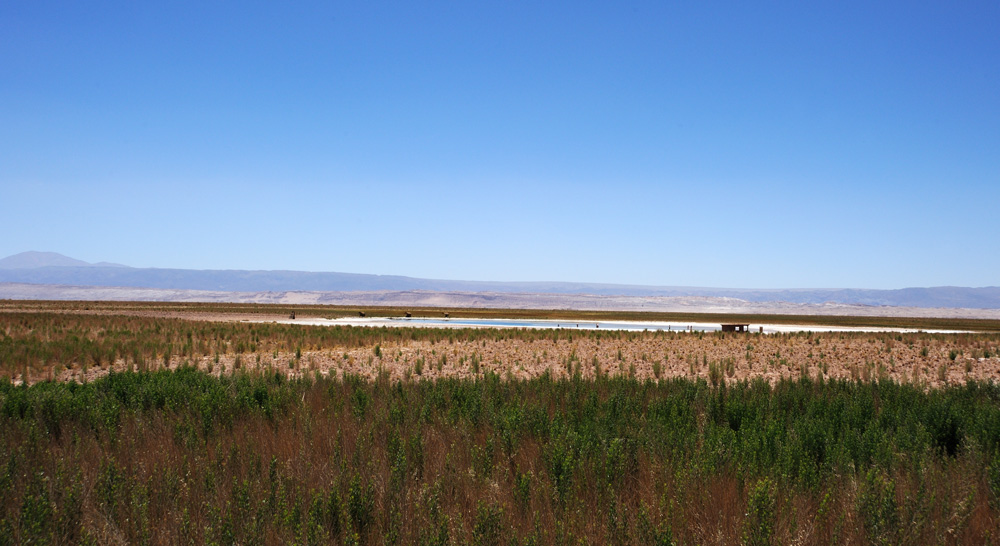
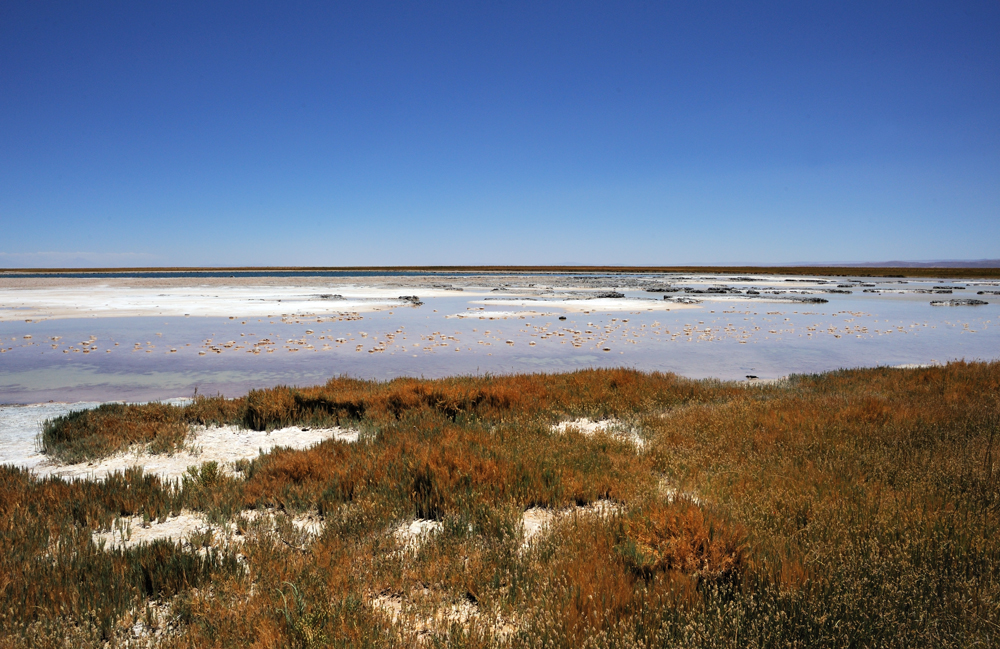
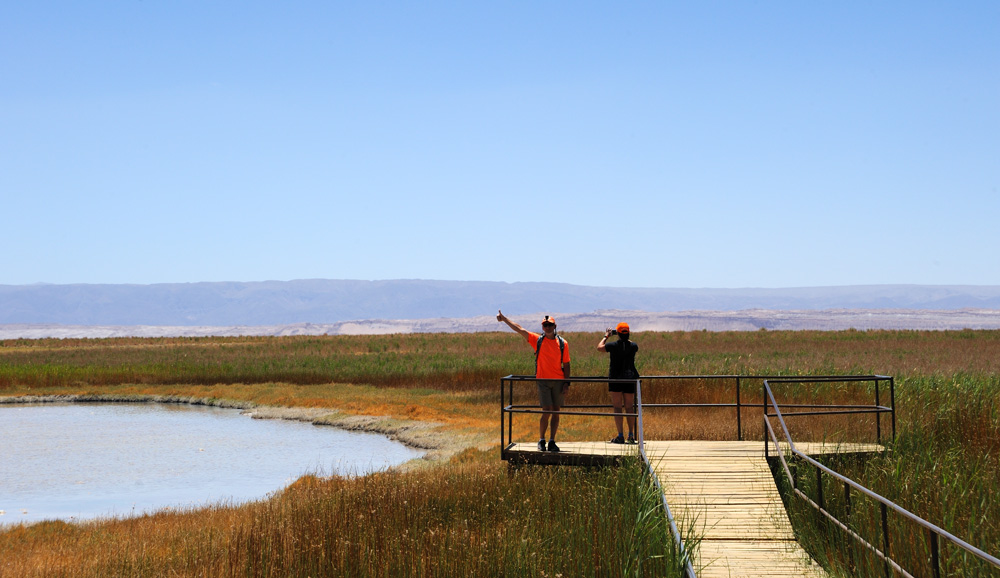
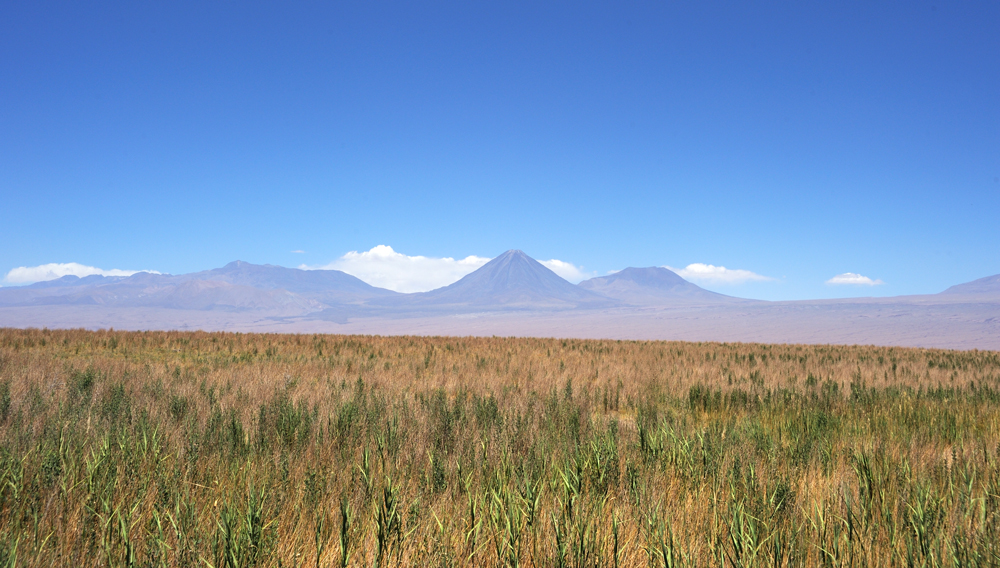
The Andes reflected in the second pond.
This is volcano Licancabur. It only looks so small, actually, it is above 6000 meters.
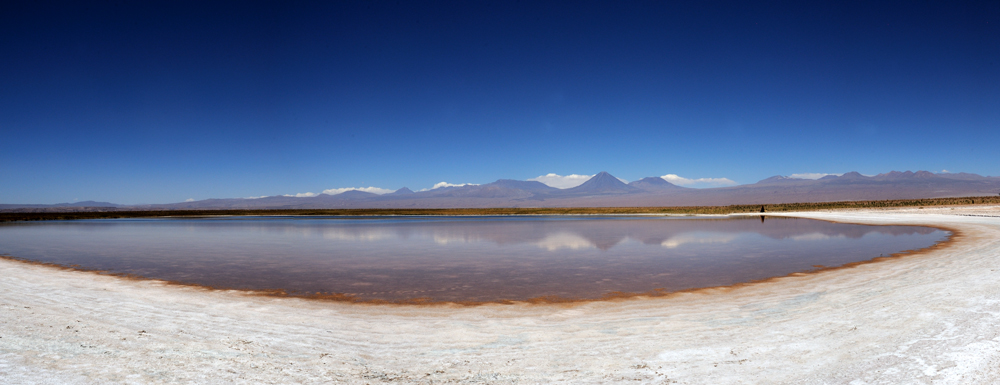
There is the only salt between first and second pond.
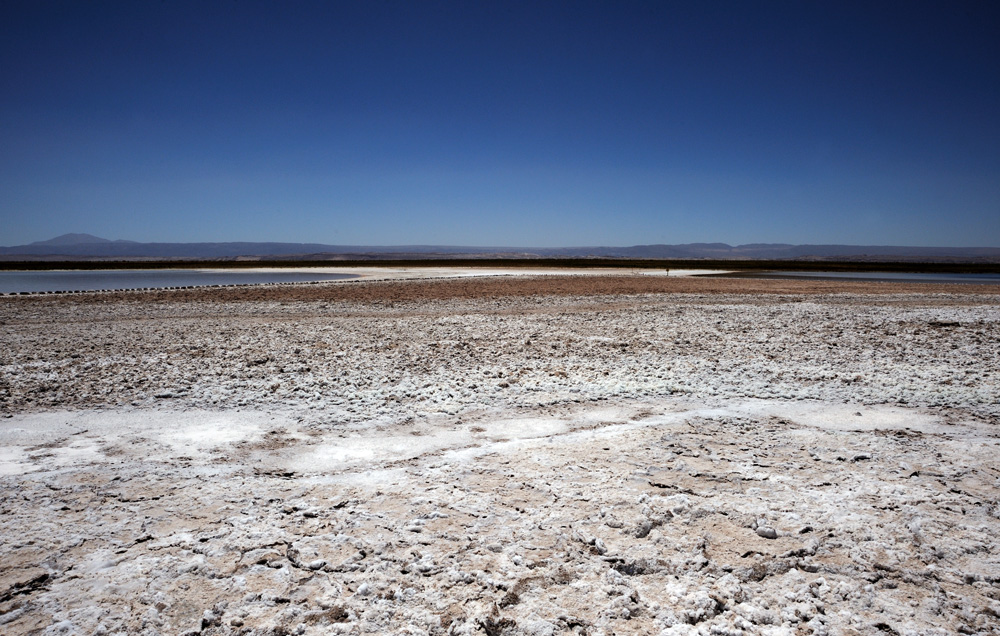
The third pond was mostly interesting by form, colour and content.
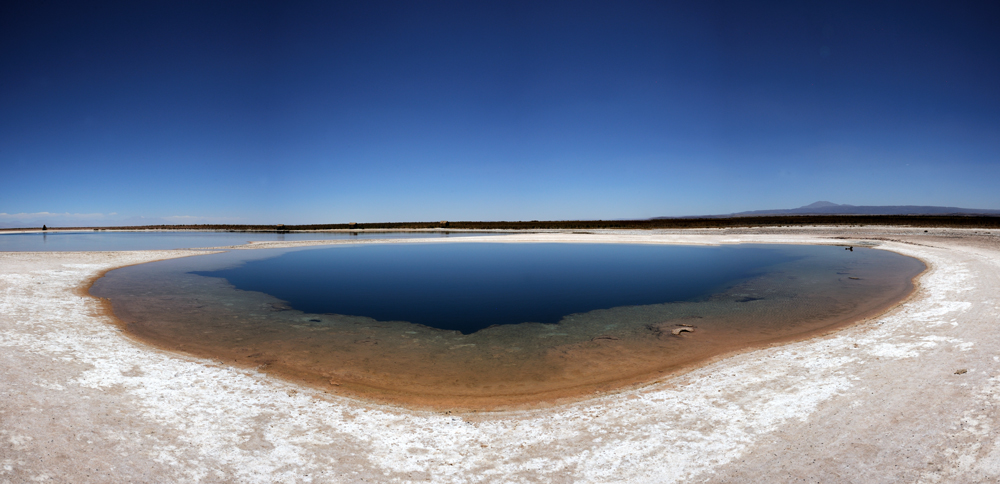
Laguna Cejar is a sinkhole, the water inside it deep and cold. Swimming is allowed. It was very specific swimming. The salt concentration of water is between 5 and 28% depending on season and amount of water. At the time of our visit, it was much high than 5%. Water expels you, you can mainly sit in the water, not really swim, but it is still a fan.
Additional good point – fresh shower after. It is cold and only couple minutes allowed, but it is much better than salt on the body.
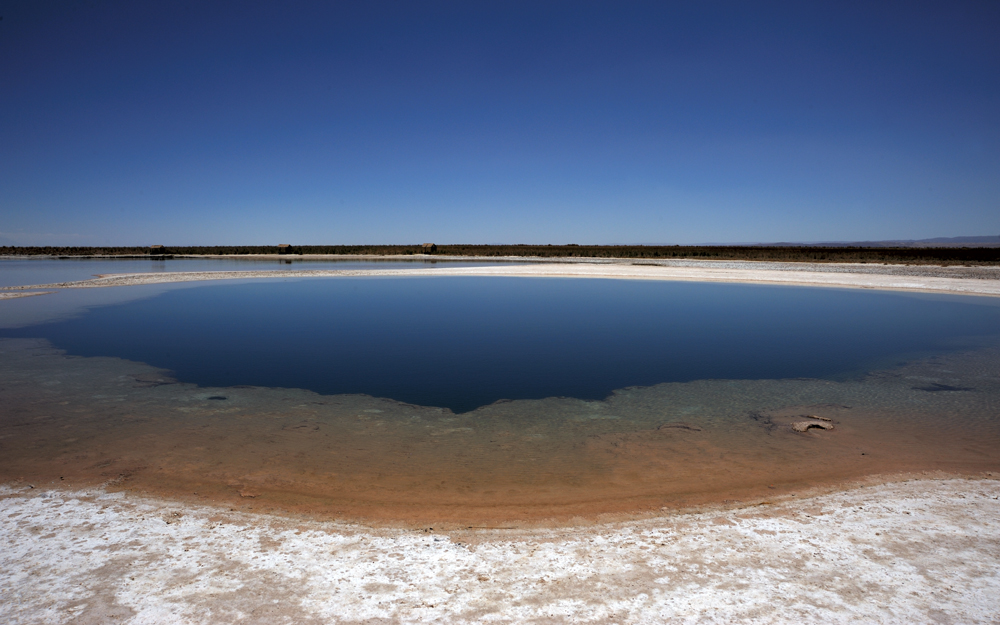
Near the road, we found two other small but deep sinkholes.
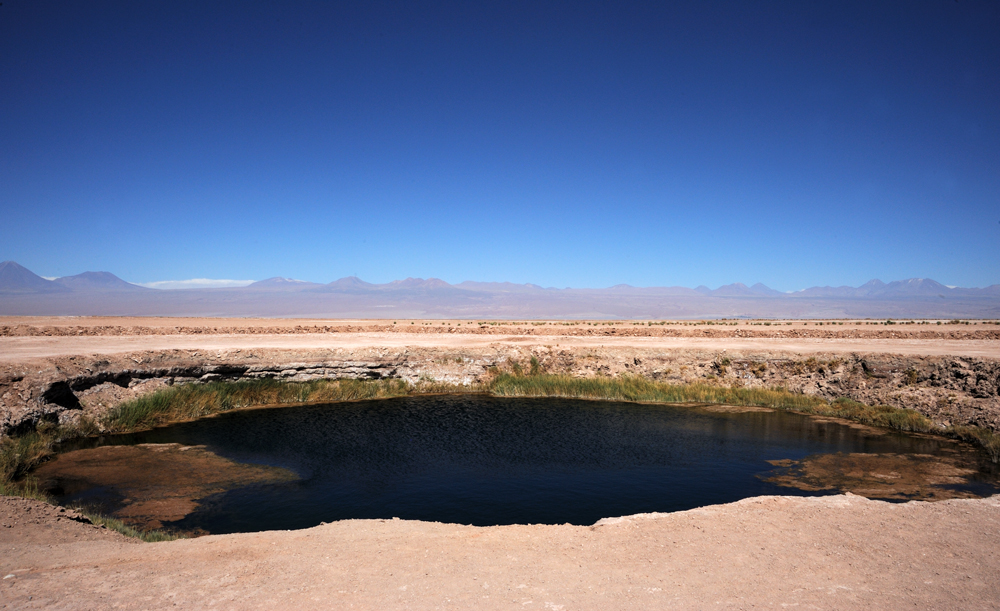
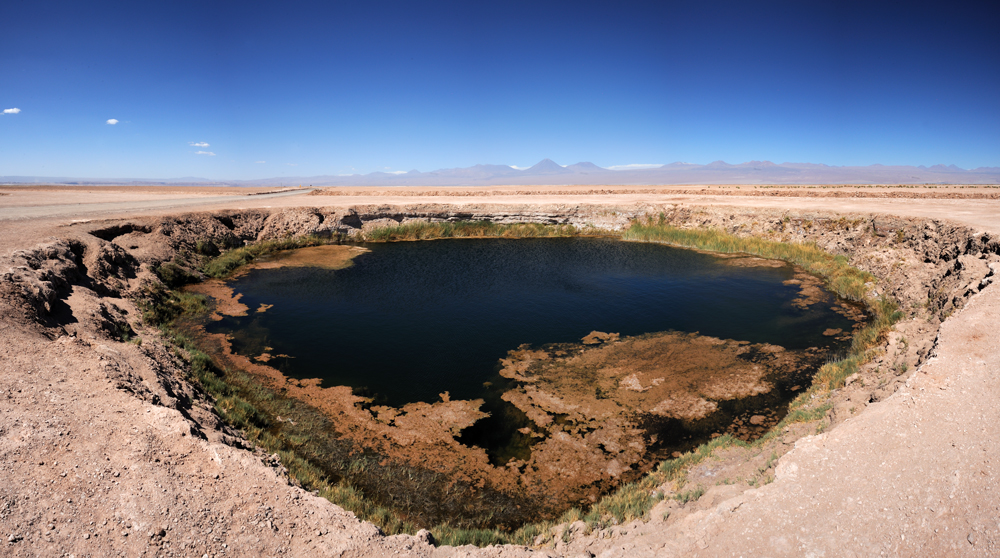
The video from Peer:
To be continue …